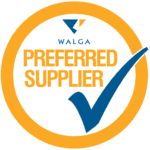Navigating construction zones poses challenges and risks for both drivers and workers. This article delves into the essential road signs and legal frameworks governing Western Australian construction zones, and how Corsign can help ensure your project meets safety and compliance standards. Whether you’re a project manager, contractor, or a driver, this guide is for you.
Legal framework governing road signs and construction zones
Laws and regulations like the Road Traffic Code 2000 and the Occupational Safety and Health Act 1984 govern road signs and construction zones in Western Australia. These legal frameworks standardise safety and compliance for both motorists and construction workers. Here are the key points you need to know.
Road Traffic Code 2000
This piece of legislation outlines the fundamental laws for road usage in Western Australia. It covers everything from speed limits to the regulations regarding the use of seat belts. In the context of road signs, the code defines the different categories of signs and the necessary dimensions and placements.
Occupational Safety and Health Act 1984
This Act is pivotal in ensuring the safety of construction workers. It outlines the necessary safety measures that employers must take, including in road construction zones. This can range from providing proper protective gear, to ensuring safe operating procedures for heavy machinery.
Australian standards
AS 1742 suite of standards specifically covers the design and application of signs used on roads and in traffic management. These standards ensure uniformity and clarity in road signs throughout the country, including Western Australia.
Spacing and placement of signs
Warning signs: The Road Traffic Code stipulates that warning signs must be visible and should provide sufficient time for the driver to respond. For high-speed zones (speeds over 80 km/h), signs should be placed at least 200–250 metres before the construction site. In urban settings where the speed limit is less, this distance may be reduced to between 50 and 100 metres.
Regulatory and Informational Signs: Regulatory signs like speed limits or ‘No Entry’ must be placed close to where the regulation takes effect. Informational signs, such as detour directions, should be placed strategically to guide drivers without causing confusion.
Types of signs and their utility in construction zones
Understanding the right traffic signs in Western Australian construction zones is vital for the safety of both drivers and construction workers. Incorrect or unclear signs can lead to accidents or delays. In this article, we’ll break down the essential sign categories you’ll see in these zones and their specific functions.
Warning signs
Warning signs in Western Australian construction zones are crucial for alerting drivers to upcoming hazards and changes, allowing them time to adjust speed and direction accordingly. Here are the key types you’ll encounter.
Yellow diamond signs
The primary purpose of orange diamond signs is to alert drivers to temporary hazards like construction zones or specific road conditions such as loose gravel. These signs are diamond-shaped with an orange background to catch attention and convey urgency.
Common messages displayed on them include ‘Work Zone Ahead’, ‘Lane Closure’, and ‘Detour Ahead’. In terms of placement, they are generally situated 200–250 metres before the hazard in high-speed areas and 50–100 metres in lower-speed zones, depending on factors like visibility.
Roadwork ahead signs
‘Roadwork Ahead’ signs are early indicators that prepare drivers for upcoming construction. Usually rectangular or diamond-shaped, they feature black text on a yellow or orange background for visibility. Positioned well ahead of the work zone, these signs give drivers time to slow down and prepare for altered road conditions.
End road work signs
Signs marking the end of construction zones indicate the resumption of standard road rules. They are rectangular with black text on a white background for readability and are placed immediately after the construction zone. Some include a thank-you message to acknowledge driver compliance.
Regulatory signs
Regulatory signs set crucial rules for drivers in construction zones. One key example is temporary speed limit signs, which prioritise safety and come with strict enforcement measures.
Temporary speed limit signs
Temporary speed limit signs in construction zones indicate reduced speeds for driver and worker safety. These signs often feature added elements like flashing lights for emphasis. Strict penalties, such as doubled fines and demerit points, are enforced for violations.
Lane control signs
Lane control signs inform drivers of upcoming lane closures and guide them to the appropriate lanes. Featuring arrows on rectangular boards, these signs are placed at intervals before the lane change and exactly at the point of closure to ensure drivers can adjust their route safely.
Informational signs
Informational signs in construction zones guide drivers by indicating alternate routes and work area extents. They facilitate smoother navigation by providing detour instructions and distance markers.
Detour signs
Detour signs direct drivers around construction zones using alternate routes. Typically featuring arrows and sometimes additional information like distances, these signs have bright backgrounds for visibility. They are placed at key intersections and decision points to keep drivers on the correct detour route.
Distance and exit signs
Distance and exit signs indicate the extent of the construction zone and upcoming exits. These rectangular signs feature easily readable white text on a green or blue background. Positioned at the start and throughout the construction area, they help drivers gauge the remaining distance.
Other safety objects
Beyond signs, various other physical objects are deployed in road construction zones to enhance safety for both workers and motorists. Here are some commonly used safety measures:
Barriers and cones
Physical barriers like plastic cones, concrete barriers, and water-filled barricades segregate traffic from the construction zone. These barriers minimise the risk of vehicles straying into work areas and vary in their durability and purpose.
Flashing lights and beacons
Flashing lights and beacons enhance visibility in critical areas, especially in low-light conditions. Often attached to signs, vehicles, or barriers, they improve safety for both drivers and construction workers.
Pavement markings
Temporary road markings like painted lines and arrows guide drivers through lane shifts during construction. Made for short-term use, these markings add an extra layer of safety in navigating altered road conditions.
Delineators
Delineators are used to guide vehicles safely around curves and shifts in the roadway. They are usually tall, skinny posts equipped with reflective tape to enhance visibility, particularly during nighttime or low-light conditions.
Warning bells or sirens
Warning bells or sirens provide an audible alert to drivers and are often used in conjunction with flashing lights. These are generally placed at highly dangerous or critical areas within the construction zone to command immediate attention.
Arrow boards
Arrow boards serve to direct the flow of traffic around the construction site. They are strategically positioned either on the road or on the side to indicate the direction vehicles should follow, supplementing other signage and road markings.
Variable message signs (VMS)
Variable message signs (VMS) offer real-time information to motorists, including road conditions, delays, or closures. These are usually placed before key decision points or significant changes in road conditions, enabling drivers to make informed choices.
Penalties for non-compliance
In Western Australia, companies that fail to comply with regulations within construction zones can face severe penalties. Failure to adhere to safety protocols, including the correct placement of signs and other traffic control devices, can result in hefty fines, legal repercussions, and even a halt in operations until compliance is achieved. These measures underscore the critical importance of adhering to established rules to ensure the safety of both construction workers and motorists.
How can Corsign help?
Corsign, a leading Australian company specialising in the design and manufacture of signs and safety products, can play a pivotal role in ensuring that road construction zones in Western Australia adhere to the highest safety standards. Utilising the company’s expertise and quality products can help meet and exceed the requirements laid out by the Road Traffic Code 2000, the Occupational Safety and Health Act 1984, and the AS 1742 suite of standards. Here’s how Corsign can contribute:
Regulatory compliance
Corsign offers products that meet Australian standards, simplifying the compliance process for construction companies in Western Australia.
Custom solutions
With a wide range of customisable signs, Corsign can meet the unique needs of any construction project.
Quality and durability
Made from premium materials, Corsign’s products are built to last, providing a cost-effective, long-term solution.
One-stop shop
From signs to flashing lights and rumble strips, Corsign offers a comprehensive range of safety products, making it a one-stop solution for construction zones.
Final thoughts
Understanding the nuances of road signs and safety measures in construction zones is crucial for the well-being of everyone involved. With stringent penalties for non-compliance, it’s more important than ever to get it right. Corsign offers a one-stop solution for all your signage needs, helping you navigate the complexities of legal compliance while ensuring maximum safety.




